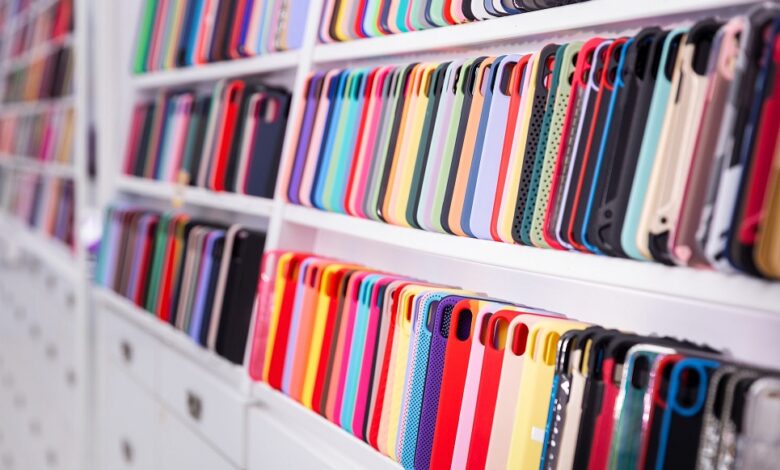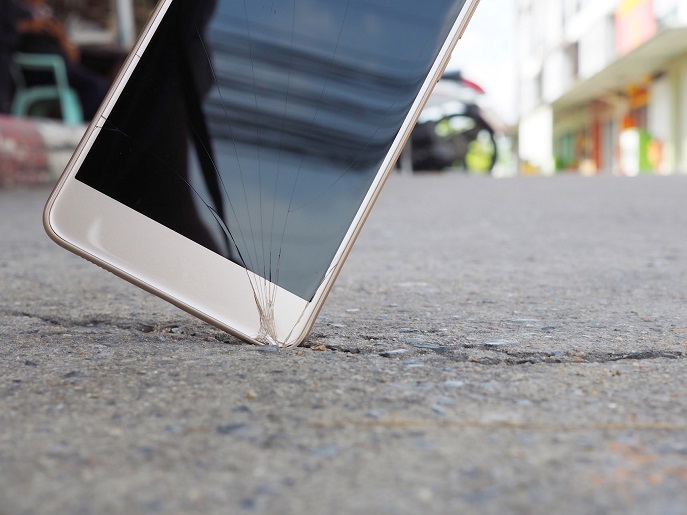The Phone Case Clash: Various Types Of Phone Cases Explained

Everyone experienced losing their grip on the phone. If you’re quick or just lucky, you’ll have it safe and sound in your arms after a mini heart attack. If not, then you’ll be seeing a few scratches or worse, a broken screen. This is why phone cases are made—so that in such accidents or clumsiness, you don’t have to look at your phone on the ground, teary-eyed.
And when looking at phone cases, you’ll find a lot of options. This article makes it less complicated, enumerating and explaining the various kinds of phone cases available in today’s market.
Types of Phone Case Materials
Phone cases are made out of several materials, each having its unique pros and cons.
- Plastic
Plastics are everywhere in this modern society. And thanks to their manufacturing value, flexibility, and durability, this is the top pick material for most phone case makers. It comes in several varieties serving different purposes. And in terms of phone cases, there are two kinds of plastic used:
- Polycarbonate
In terms of reliable impact resistance, polycarbonate (PC) plastic is what you need. As an amorphous thermoplastic, polycarbonates are used throughout a number of industries in manufacturing various products including compact discs, bulletproof windows, medical devices, and glass lenses.
It comes with a long list of benefits, particularly in terms of protecting your phone. It’s not only strong and durable, but it’s also weather-resistant, flexible, and cheap. Plus, it’s highly customizable, so you’ll find a lot of polycarbonate phone cases in various colors and designs. While PC phone cases are valued for their high-impact resistance, they’re not entirely scratch-resistant. Thus, some phone cases are coated with scratch-resistant layers for extra protection.
- Thermoplastic Polyurethane
Not your typical plastic, thermoplastic polyurethane (TPU) is a highly versatile kind of elastomer that’s being used in furniture, car seats, and some packaging materials. With its long list of beneficial properties such as resistance to oil, grease, and abrasion, and elasticity, TPU makes an excellent material for phone cases.
Available in soft or hard form, TPU can be easily molded into various shapes. Cases made from TPU are exceptionally strong that can withstand impact better than rubbers. Plus, it’s also affordable.
Unfortunately, TPU tends to be prone to water absorption due to its hygroscopic properties. And while soft TPU cases are more durable than rubber, they need extra cushioning material to ensure they don’t crack or break apart.
- Silicone
Most people think silicone is some kind of synthetic rubber, which is partially true. However, it’s a distant cousin of traditional plastic. Crafted from the element silicon, which is found in sand and bases of petroleum, silicone is one of the most highly used materials in most iPhone cases.
More flexible and softer than most plastics, silicone is a great shock absorber. Unlike other rubbers, silicone can hold up in cold environments. Its soft, grippy texture also minimizes accidental slips from your hand. Plus, its softness makes it easy to install and remove on your phone.
Unfortunately, like any rubber-like material, silicone doesn’t wear particularly well, attracting dirt, hair, and fuzz over time. Also, the grippy finish isn’t that easy to slide into your pocket.
- Metal
Metal is the strongest, hardest, and most reliable material for phone protection. Aluminum is the most commonly used metal in smartphone cases; however, you can find ones made from brass, titanium, and even luxurious cases made of gold metals. They’re the ultimate protection against scratches and falls.
Unfortunately, metal phone cases aren’t that popular for a variety of reasons. For one, unlike plastics or silicone, metal phone covers are heavy, bulky, and expensive. This is why most manufacturers only use metal for back-plating cases.
In addition, if you have the latest smartphones that use wireless charging, then metal phone cases are a big no. Due to its magnetic shielding properties, a metal phone case can affect wireless charging as well as blocking off network signals.
- Leather
For the sophisticated and discerning phone owners, a phone case using leather reflects worldly refinement. Real leather or synthetic leather cases offers great texture over other materials. Leather can be made from the hide of cows or other animals which drives up its cost. For a cheaper one, synthetic leather is made from various kinds of plastic that still have the look and feel of natural leather. With its slightly soft and rough texture, leather phone cases are easy to hold and slip easily into a bag or your pocket.
However, leather phone cases are mainly for aesthetics. This means they offer limited protection if you accidentally drop your phone. Plus, leather, especially those derived from natural animal skin, tend to be more prone to tears or scratches and probably not worth the hefty price tag.
- Wood
For the environmentally conscious, wood is the best phone case material you can find. Wood phone cases step away from unsustainable plastic or rubber materials and use natural, organic wood, lending a handcrafted and earthy charm to your high-tech device. This is something entirely different and unique from most phone cases you see in the market today.
Most wooden phone case manufacturers use bamboo since it’s considered a highly sustainable, green material. It helps protect against scratches and falls. The texture of the natural wood grain also makes it super easy to hold and grip. Wood phone cases are also highly attractive and can be customized to your liking.
Unfortunately, a wood phone case is prone to cracks, chips, and nicks if dropped. They also tend to be bulkier and thicker than other phone cases. Also, they’re not that popular, which means you have limited style choices with some device models not having wood options available.
Types Of Phone Case Style And Construction
After enumerating the different materials used in phone cases, here are the different styles or construction of phone cases:
- Basic Cases
First off, there are the basic, slim cases with the most simplistic design. If you don’t want to cover your phone’s gorgeous color or design or don’t want something too flashy and bulky, then basic phone cases are the best. Take note, however, that basic cases offer minimal protection. They can safeguard your phone against scratches on areas it covers while slightly boosting your phone’s chances of surviving a fall.
You’ll find numerous translucent basic cases that allow your phone’s design to shine through while providing basic protection. They offer a wide range of colors and styles and are pretty much on the cheaper side.
- Backplate Cases
Currently the most popular kind of phone cover, a backplate case may feature metal sidings with transparent back or full hard plastic or metal. This phone case is lightweight and doesn’t obscure the screen. It snaps easily into the phone, partly protecting the display while maximizing protection from the sides and back.
If you’re looking into backplate cases, make sure to also protect your phone display with screen protectors.
- Rugged Cases
Rugged is what you think it is—heavy and bulky but provides the utmost protection. Most rugged cases are equipped with reinforced corners and inclusions of air pockets that can significantly reduce the risk of damage if your device falls, but inevitably adds bulk.
Some manufacturers have even gone further by putting US military standard materials. A rugged case with MIL-STD-810G certification covers everything from impact and vibration to temperature and pressure.
Unlike back-plate cases, the rugged case covers every angle, including the side buttons and even the sides of your screen. This can make it harder to press buttons and reduce touchscreen sensitivity.
- Folio Cases
Flip-open or wallet-like phone cases are a great alternative to traditional cases. They’re pocket- and bag-friendly because they offer all-around protection from scratches.
Flip-open cases usually support the sleep-wake function of some devices. Most folio cases also feature card slots while some can serve as wallet replacements. Magnetic closures are the most popular, allowing for a more stylish and secure design, but they’re not as strong as a stud, tab, or elastic closure.
In terms of drop protection, some cases feature a shell-type case inside for reinforcement while others have no coverage on the corners or sides.
- Battery/Solar Case
If you always find yourself with a dead phone, then these kinds of phone cases are worth trying. These cases have an in-built solar panel or a literal battery that’s capable of charging your phone for another few hours.
Battery cases will be heavy and bulky. Although you can find slimmer ones, it means they have a low mAh rating and thus won’t charge your phone that much. Meanwhile, solar cases, allows you to charge your phone on the go as long as there’s a light source. They’re a lot slimmer than battery cases, but they’re slow at charging phones. These cases are the most sensitive since a drop can mean protecting your phone but damaging the battery or solar panel.
Conclusion
Spills, falls, and drops are just a few of the unwanted events that could ruin your phone. The good news is you have a lot of choices for protecting your phone. This article made it a lot easier to understand the various types of phone cases and find the one that can protect your phone.





